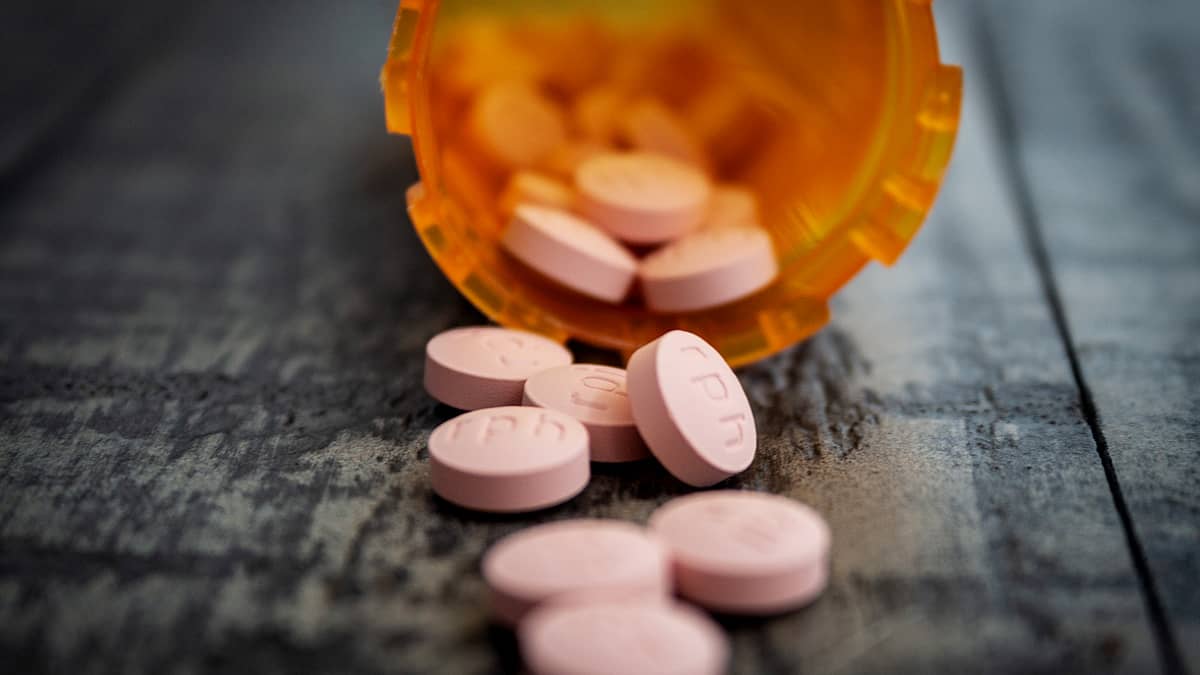Why is Hormone Therapy So Expensive in the United States?
high drug prices

American consumers from all walks of life and economic backgrounds have been dealing with the outrageous and increasingly out of control costs of prescription medication for years, and the problem only seems to be getting worse.
From the skyrocketing cost of medications like asthma pumps to hormone therapy, more and more Americans are struggling to get the medications they need. As too many people are finding out, the high price of prescription drugs in the U.S. can have serious and life-threatening consequences.
More and more, Canadian pharmacies are becoming a beacon of hope to Americans who can’t afford to pay the inflated prices the pharmaceutical companies are charging in the United States.
Due to a lack of regulation or any significant oversight of the pharmaceutical industry on the part of the American government drug pricing, drug companies are free to charge whatever they want in the American market, which typically results in the same drugs costing much more than they do just across the border in Canada.
Hormone Therapy Costs in the United States
Hormone therapy includes a broad category of medications and therapies used by both men and women. One of the more common and well-known uses for hormone therapy (sometimes also referred to as hormone replacement therapy) is for women going through the process of menopause.
As the body ages, the production of certain hormones slows down and diminishes, resulting in a number of symptoms and side effects that can affect a person’s health and overall quality of life. For women, the end of the reproductive phase means that the body produces less of the hormones estrogen and progesterone.
This can lead to a number of symptoms and side effects including:
- Hot flashes
- Night sweats
- Chills
- Sleep problems
- Weight gain
- Mood irregularities
- Depression
- Osteoporosis
- Sexual dysfunction
- Cardiovascular disease
Every woman experiences menopause differently, and the symptoms can range from mild to severe depending on the individual. But for some, the symptoms are so severe that hormone therapy, which helps to stabilize the body's estrogen levels as they naturally decline, is an essential treatment.
According to the US National Library of Medicine National Institutes of Health (NIH), there are approximately 100 estrogen-only and estrogen-progesterone combination therapies available for women who seek treatment for menopause symptoms.
Despite the fact that only about a quarter of the women who experience menopause symptoms seek treatment every year, the NIH estimates that annual US expenditures on estrogen-only and estrogen-progesterone combination hormone replacement therapies range from $264 million on the low end to over $6 billion.
Individual prices vary depending on the type of hormone therapy and the specific drug, but the annual cost for some hormone medications can be more than $1,000 for some women.

Hormone Therapy and Cancer
Menopause is just one medical condition where hormone therapy is prescribed. According to the American Cancer Society, a form of hormone therapy is also used to help treat some forms of breast cancer. Known as hormone receptor positive breast cancer, some tumors have proteins that attract estrogen and progesterone, which then fuels the tumors and causes them to grow and spread.
For women with hormone receptor positive breast cancer, hormone therapy drugs are used to either block or limit estrogen from feeding tumor growth. Some of the most common hormone therapy drugs prescribed to treat this type of breast cancer include:
- Tamoxifen
- Fulvestrant (Faslodex)
- Aromatase inhibitors (AIs)
- Goserelin (Zoladex)
- Leuprolide (Lupron)
- Megestrol acetate (Megace)
Most women take hormone therapy treatments like Tamoxifen for five to ten years after surgery to help reduce the risk of the cancer returning (recurrence). Tamoxifen is the generic version of Nolvadex/Soltamox, and is generally less expensive than aromatase inhibitors.
The monthly cost of aromatase inhibitors like anastrozole (the generic version of Arimidex), letrozole (the generic version of Femara), and exemestane (the generic version of Aromasin) can vary wildly, from just a few dollars to over a $1,000 depending on the prescription and insurance plan.
Even on the lower end of the price spectrum, many of the women that rely on hormone therapy to recover from breast cancer and stay cancer free are looking at thousands of dollars for a single medication (hormone therapy is usually prescribed in conjunction with surgery and other cancer treatments, which are also notoriously expensive).
As potentially lifesaving drugs that many women need to take for many years, the price tag for hormone therapy to treat breast cancer can be a big concern for many American women, especially if they are under or uninsured.
Hormone Therapy for Men
Hormone therapy is not just for women. According to the Prostate Cancer Foundation, approximately half of all men with prostate cancer are treated with hormone therapy. ADT (androgen deprivation therapy) lowers testosterone levels in the body. Like estrogen in hormone receptor positive breast tumors, testosterone can fuel cancer cells in the prostate in men.
The Soaring Costs of Hormone Therapy in the United States
Dealing with out of control prescription drug prices has unfortunately become a way of life for millions of Americans, even with health insurance that includes some form of prescription drug coverage. Over the last decade, the out-of-pocket cost of everything from allergy medication to hormone therapy has increased exponentially due to factors like pharmaceutical industry profiteering, and expensive or inadequate health insurance coverage.
However, for people that rely on hormone therapy like estrogen to manage the uncomfortable and disruptive symptoms of menopause, the problem goes beyond basic health insurance coverage or lack thereof. In many cases, an insurance plan can technically cover a medication, but categorize it in a higher priced "tier," making it more expensive — and unaffordable — for many women due to higher copays or reduced coverage, even when they have health insurance.
Uneven Coverage and Lack of Uniformity in Drug Pricing
So how is it possible that prescription drugs and common medications are so much more expensive in the United States than in Canada? The Canadian market has strict quality and safety standards for prescription drugs and medications, and the drugs sold in Canadian pharmacies are manufactured by most of the same companies that sell to the American market.
The only difference in most cases is the cost. In Canada, the government negotiates prices and sets limits on how much pharmaceutical companies can charge, so not only do medications stay affordable, but the prices are uniform and cost the same for all Canadians, regardless of their income, family size, age, or the geographical area in which they live.
The Canadian pricing model also protects consumers from having to make some of the impossible choices that ordinary Americans are faced with every day when they can't afford the medicine they need: from going into debt, selling their possessions, to going bankrupt in many cases.

Hormone Therapy is not a Luxury
For women that live past the age of 50, menopause is an inevitable fact of life, and with at least half of women experiencing menopause symptoms that require treatment, hormone therapy is a necessity not a luxury. The same holds true for potentially life-threatening diseases like breast and prostate cancer, which don't discriminate according to a person's ability to afford the medications and treatment they need.
Even after the Affordable Care Act (Obamacare), nearly half of all Americans (49% according to the Kaiser Foundation) have employer sponsored health insurance plans. The truth is that American consumers have very little, if any, real choice when it comes to their health care and prescription drug coverage.
While some employers do offer different tiers of coverage, employees are basically "stuck" with the plan their employer chooses to offer, which is usually based more on how much money the company can save as opposed to the nature of the coverage (and the quality) that the plans actually offer. Employees also have no say if their company decides to change plans, altering everything from prices and level of coverage to whether or not they can keep seeing their doctor or using the same pharmacy to fill their prescriptions.
Erratic Pricing Models Make Some Medications More Expensive for Some
In a perfect world (or practically everywhere except for the United States), the cost of a medication like Vagifem, which helps to counter the effects of estrogen loss during and after menopause, would be as straightforward as any other essential product where the price is uniform and everyone pays the same price.
However, in the U.S., where the government doesn't negotiate pricing with the pharmaceutical companies or set price limits to protect consumers from extreme markups and price hikes, it can be hard for individuals to predict and therefore budget for the medications they need.
By and large, prices are determined by the type of coverage someone has, whether there's a cheaper generic version of the medication available, as well as coupons and discounts for some consumers depending on their insurance, level of coverage, and other qualifying circumstances. Two women both taking Vagifem or birth control pills may have very different costs depending on whether or not they’re insured, and the type of insurance they have.
Paying More for the Same Medication
The pharmaceutical industry and their allies have a long list of excuses to justify the cost of prescription medications in the United States, which are the highest in any market in the developed world.
One rationale is that higher list prices are necessary to support research and development for new medications and treatments. However studies have found that industry profits stem from drastic price increases to existing drugs, not necessarily from newer or more effective drugs entering the market.
For most prescription drugs, the drastic price increases that Americans have been forced to shoulder over the past decade have far outpaced both inflation and the pharmaceutical industry's research and development investments, which are estimated to be less than 20%. Inflation is about 2%.
So where is the rest of the money going? Even modest yearly price increases on established medications average at least 6%, three times the average rate of inflation. According to industry and policy experts, there are little to no research and development costs and activities associated with medications once they have been approved by the Food and Drug Administration (FDA), and the bulk of the price increases have been attached to medications that have been on the market for years or even decades.
Prescription drug prices in the U.S. ultimately adhere to the for-profit model where medications and health care are treated like commodities to capitalize on rather than essential public services like utilities or even clean water.
While drug manufacturers often point to the fact that they offer rebates and negotiate prices with pharmacies and health care administrators and intermediaries so that consumers are not actually paying the list price on every medication, the system still makes even basic medications prohibitively expensive and out of reach for millions of Americans.
To learn more about ordering prescription medications from an international and Canadian pharmacy and how to shop for lower priced medications online, contact us at NorthWestPharmacy.com for more information. Call us toll free at 1-866-539-5330 or visit us online.